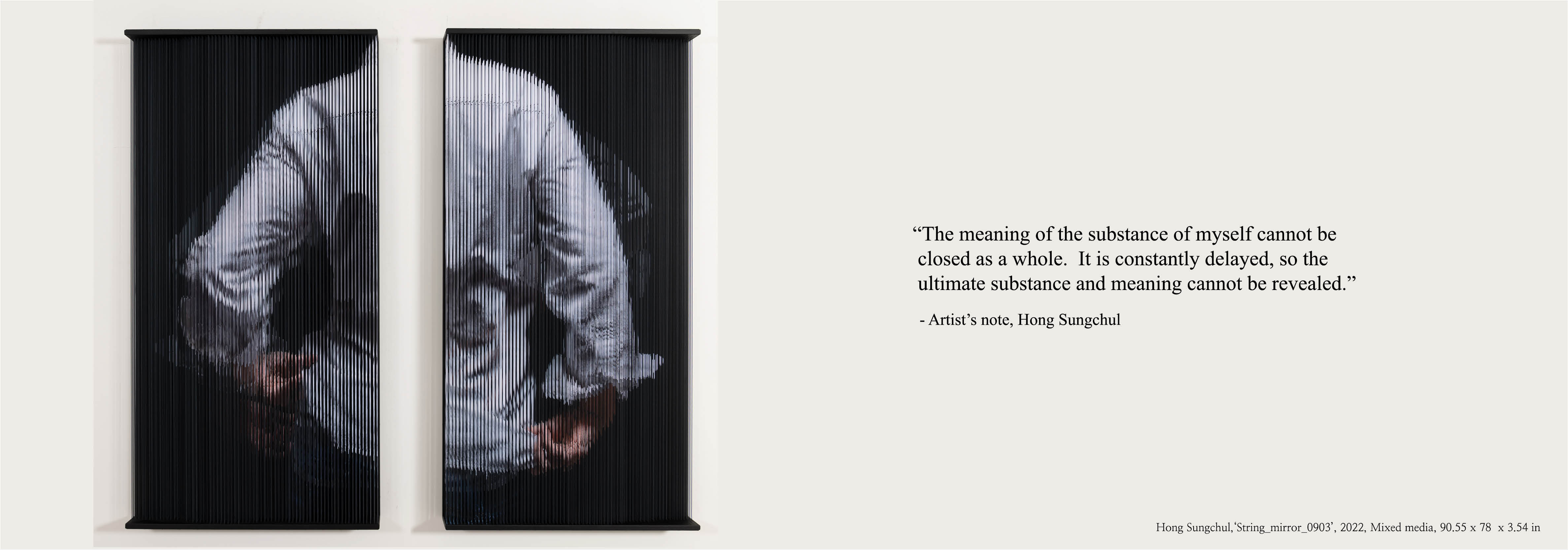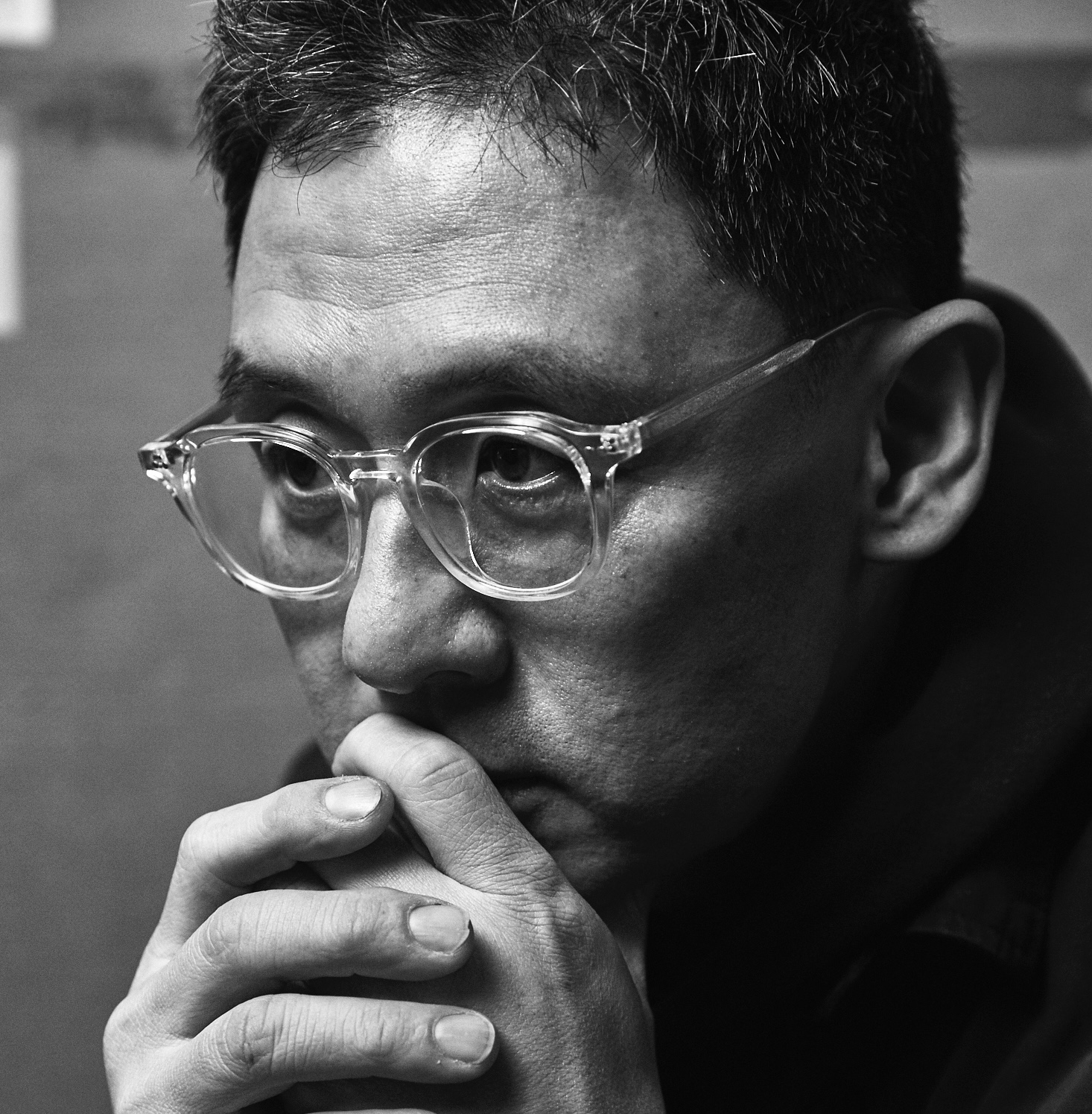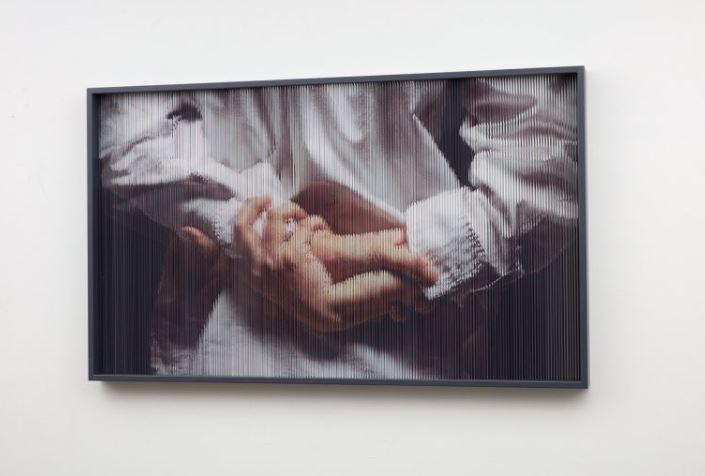Hong’s ‘Perceptual Mirror’ is a mirror reflecting one’s own body. However, the reflection on strings and LCD units run away the harder one tries to catch it. Part of body printed on the strings aligned perpendicularly with layers in the still frame attracts viewers. Those acting hands make as various figures as people’s facial expressions.
However, strings alluring people to pull or twang has riddling multi-level surfaces. Gestures of those hands which look like sign language or shadow play are ghost-like illusion of actuality. No matter how hard people try, they only find black or white background. The fictional unity of illusory image is unveiled by our tactile sensation. In addition to string mirror, reflectors of LCD units glitter in exhibition hall.
Unlike the ‘string mirror’ which is disturbing but alluring, LCD mirrors responding to light energy is superficial and schismatic like kaleidoscope. However, divided mirrors do not have emotional or catastrophic tone. The message of the work is not that an entire existence is divided, but that existence itself is division. Men can escape from their fractional physical image using mirror. Mirror confirms unity of the subject.
However, that is misunderstanding as explained in modern psychoanalysis. Jacques Lacan has mentioned mirror stage of illusion created by the subject who is mesmerized by the power of spatial unity. According to the theory of mirror stage, mirror image creates a myth of exterior totality and an ego is a byproduct of that illusion. Mirror stage produces a subject who identifies the image with oneself by being captivated one’s own image on the mirror and creates an integrated illusion of fragmented physical images.
A series of these illusions is an armor of defending self-identification ostracizing the subject. Body movements in string mirror, which is impossible to reach, contrast with rhythmically glittering surface of perceptual mirror. It is a contrast between hands remembering an organic whole and new mechanical unit full enough as fragment itself. We give up the illusion of substance and totality in fragmented bodies in the perceptual mirrors.
Then we lose ourselves in persistent coincidence and flexibility. The body sinking in the continent of darkness now shows its trace with pure difference. In the mechanic mirror, the body is not reproduced as actuality but it is denaturalized. It becomes a flexible field where connection, delivery, flow and generation meet together. It serves as a space where meaning, production and composition are created.
The actuality which disappears beyond the mirror or scatters as fragments seems to give contemporary artists a sense of loss and to nudge them to challenge persistently.






















